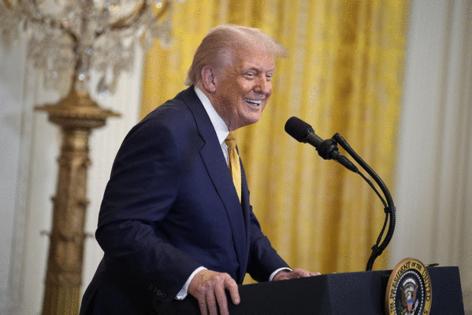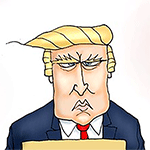What powers does Trump have during government shutdown? Experts weigh in
Published in News & Features
In the event of a government shutdown, President Donald Trump would have broad authority to reshape the federal workforce — though only temporarily, according to legal experts.
With no spending deal in sight and the Oct. 1 funding deadline fast approaching, such a shutdown now seems increasingly unavoidable.
The deadlock in Congress stems from conflicting spending plans, with Republicans pushing for a clean bill, while Democrats have conditioned their support on extending Affordable Care Act subsidies.
Trump warned that major changes could occur — which could be detrimental to Democrats — if the government runs out of funding.
“We can do things during the shutdown that are irreversible, that are bad for them and irreversible by them, like cutting vast numbers of people out, cutting things that they like, cutting programs that they like,” he said on Sept. 30, according to Reuters.
‘Broad latitude’
If a government shutdown occurs, “the president has broad latitude” to restructure the federal workforce, Matthew Lawrence, a professor at Emory University School of Law, told McClatchy News.
“During a shutdown, all government programs and activities without funding stop, except for limited exceptions,” Sam Berger, a senior fellow at the Center on Budget and Policy Priorities, told McClatchy News. “The Executive Branch has some discretion in how it interprets the scope of those exceptions.”
The law governing government shutdowns is the Antideficiency Act, which prohibits agencies from spending non-appropriated federal funds except in emergency situations.
Presidents have the authority to designate which federal employees are essential and must remain on duty, and which are non-essential and subject to furlough, experts said.
During past shutdowns, the White House Office of Management and Budget (OMB) has published a list of employees deemed essential, Josh Sewell, the director of research and policy at Taxpayers for Common Sense, told McClatchy News.
“The gist of this is that OMB is responsible for approving each agency’s contingency plan,” Sewell said.
Presidents, and agency heads, have broad discretion in deciding what employees stay on.
“The president can push the boundaries of what’s essential in order to permit more of the government to operate in a shutdown,” Lawrence said. “Or the president can be stingy and not allow programs to operate.”
The blame game is a major factor in such decisions.
“Generally speaking, if presidents think the other party is going to be blamed then they will potentially ramp up the pain by determining very narrowly exceptions to the Antideficiency Act,” Lawrence said.
For example, during the 2013 government shutdown, former President Barack Obama’s administration decided to close the national park system. A Rutgers poll conducted at the time indicated many Americans blamed the shutdown on congressional Republicans.
Government employees and other organizations can also fight furloughs in court, Lawrence said, but past shutdowns have not lasted long enough for this to happen.
Long-lasting changes
The Trump administration has threatened to move beyond temporary furloughs and carry out mass firings if a government shutdown occurs.
An OMB memo obtained by Politico revealed the agency plans to permanently reduce the federal workforce amidst a shutdown.
But, legal experts said the executive branch only has the power to make temporary changes.
“The laws regulating shutdowns do not give any power to the president to do broad restructuring that will last past the shutdown,” Lawrence said.
“A reduction in force (RIF) is allowed when an agency lacks funding, is decommissioned by Congress, or there is a legal restructuring,” Sewell said. “There is a whole process for this and it is separate from any temporary furlough due to a governmental shutdown … Any long term changes would need to rely on other statutory authorities, not the temporary lapse in funding.”
©2025 Miami Herald. Visit at miamiherald.com. Distributed by Tribune Content Agency, LLC.







Comments